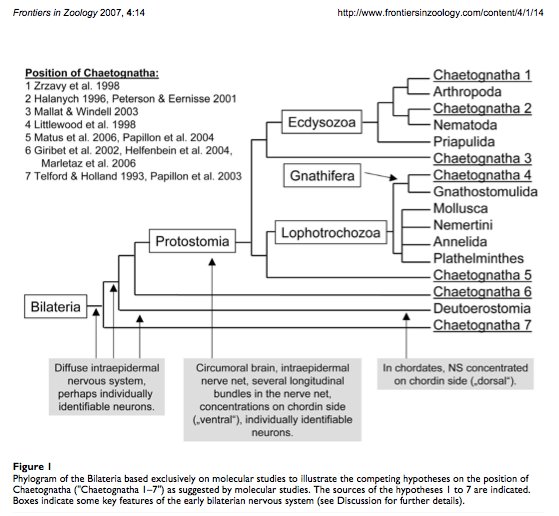Systematics or Phylogenetics
The exact phylogenetic relationship of chaetognaths to other
phyla has been debated since their discovery in 1778, with many people in the
past originally classifying them as deuterostomes, based on their radial
cleavage (Shimotori & Goto 2001, VIMS). Adding to this problem is that
Chaetognatha do not have a synapomorphy that they share with any taxon other
than Bilateria (Ruppert et al. 2004).
More recently however, many researchers are concluding that chaetognaths should
in fact be classified as protostomes. But despite current consensus, analyses
of DNA sequences have been unable to explicitly position chaetognaths within
protostomes (Figure 1, Harzsch 2007). Peterson and Eernisse (2001) concluded
that considering chaetognaths have plesiomorphies that bilaterians have, but which
ecdysozoans do not, there are therefore probably a basal ecdysozoan.
Current molecular techniques are able to separate chaetognaths into one of two
Orders, Phragmophora and Aphragmophora. Those that are considered in the order
Phragmophora, have the addition of phragmes (transverse muscles), this includes
the family Spadellidae (Spadella),
and Eukrohniidae (Eukrohnia and Heterokrohnia), whilst phragmes are
lacking in Aphragmophora (Telford and Holland 1997). Despite this technology,
mismatches due to convergence have been noted (Casenove et al. 2011).

Figure 1: Overview of some of the proposed phylogenetic relationships for Chaetognatha. From Harzsch & Muller 2007. |